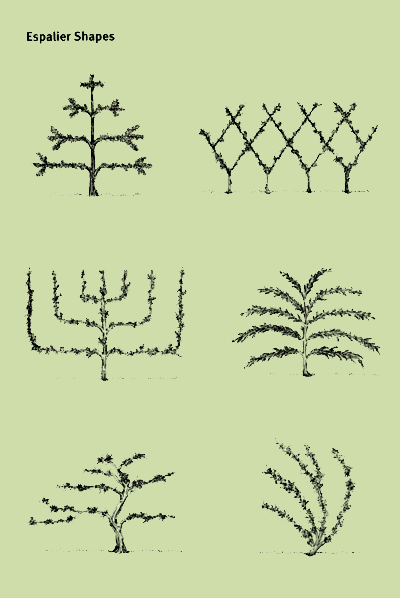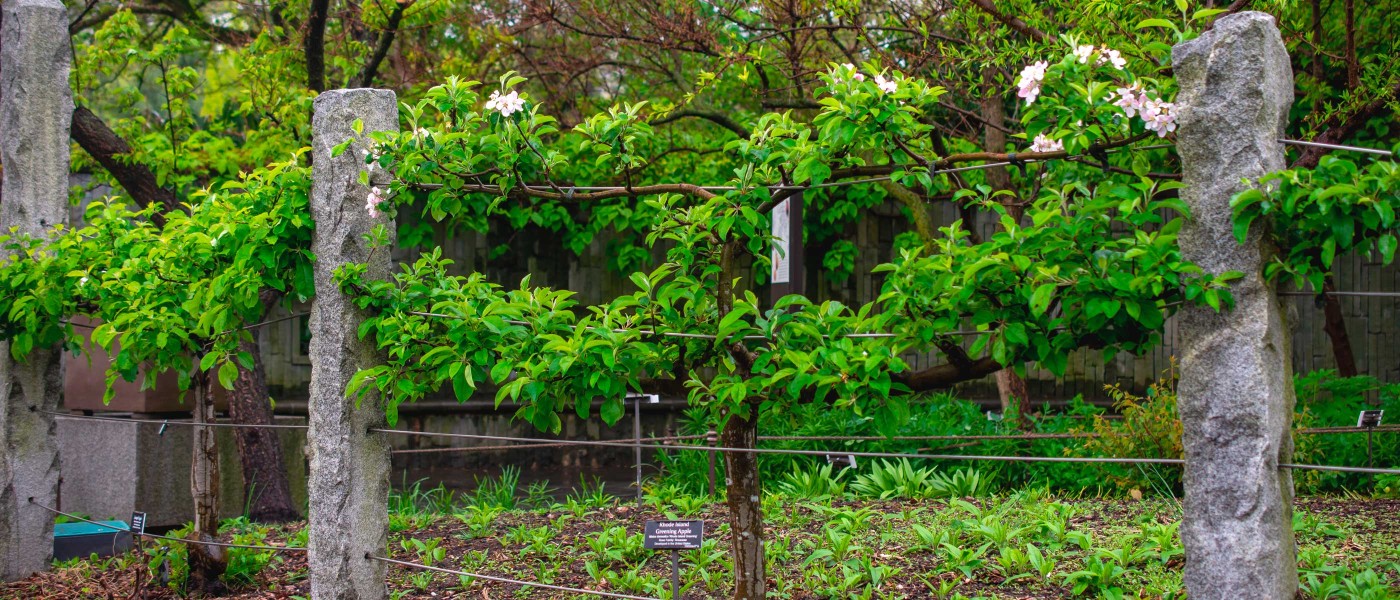The Espalier Method: What You Need to Know
The French word espalier refers both to a plant grown in a pattern on a flat plane and to the vertical support, such as a wire, trellis, wall, or fence, that it grows against. Like so many forms of fancy-pants gardening, espalier originated with the Romans. Many purely ornamental plants can be espaliered—Pyracantha is a spectacular choice, as are camellias, flowering crabapples (Malus), witch hazels (Hamamelis), creeping fig (Ficus pumila), Pfitzer juniper (Juniperus chinensis 'Pfitzerana'), and flowering quince cultivars (Chaenomeles)—but apples (Malus), pears (Pyrus), cherries (Prunus), and other fruits are the classic quarry for this gorgeous botanical technique.
The best candidates have long, flexible branches, ornamental flowers or fruits, and good resistance to pests and diseases. Don't pick a shrub or tree that is significantly taller than the surface it will be growing against. If you want to espalier an apple or pear, make sure it is growing on dwarfing rootstock and that it fruits on spurs—short stubby branches.
In addition to being beautiful, espalier is a godsend if you're short on room: It saves space by making three-dimensional plants two dimensional, and it increases the range of plants that can be grown in cold regions. A gardener in USDA Zone 4 can plant 'Cox's Orange Pippin' apple, which is hardy only to USDA Zone 5, against a wall with a sunny exposure and plan on picking fruit for an apple pie. Gardeners in warm climates may need to give espaliers a less sunny exposure.
After choosing the plant you want to grow, the next decision is what design to create. Espaliered plants typically consist of a single main stem, the leader, and several tiers of horizontal or near-horizontal branches, or arms. You can invent your own design, but someone probably has beaten you to it. There are scores of classic patterns with romantic names such as palmette verrier, Belgian fence, Belgian doublet, and oblique palmette that have been challenging and delighting gardeners for centuries. Or you can be informal, following no clear pattern.
If you use a formal design, begin by erecting a strong form—wire is the usual material—that you want your espalier to follow. If you're planting against a solid surface like a wall, install the form at least six inches away from the wall to ensure good air circulation. You can either purchase a plant that has been pruned for espalier, one that is already growing on a trellis, or begin with an unpruned plant. Prune new plants sparingly until they are well established. (For details on pruning specific shrubs, trees, and vines, see the appropriate chapters in this book.)

Espalier involves training—forcing branches to grow in the direction you want—as well as pruning. Stems are most flexible when they are young, so don't wait too long to tie them to your support. Most pruning should be done when the espalier is dormant (or after it flowers, if it is a spring bloomer). Which stems you cut off and which you save depends on the pattern you've picked. Remove or redirect any stems that are heading either inward or outward, and always cut to buds or stems that are pointing in the direction you want the growth to go. If you've chosen a simple design, the basic framework may be established in three or four years; intricate designs take longer.
Just remember that with espaliers, growth must be directed, fastened, and curbed continually. The pruning and training never ends.


